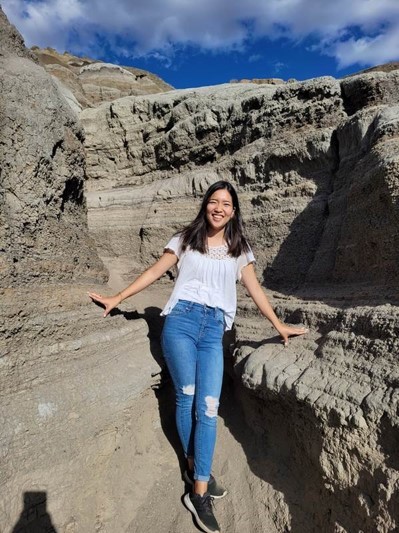App: Conquer the Cold Calgary (CCC)
Hosted in ArcGIS Online:
Introduction
Natural disasters are caused by a wide range of environmental phenomena. Many regions in Canada are affected by natural disasters such as catastrophic floods and wildfires (e.g., Calgary 2013 floods; Fort McMurray 2016 wildfires) that have been well-reported in the past decade. Because of their scale and harm to humans and the environment, provincial governments and municipalities have taken steps towards mitigating the impacts of future severe natural disasters (Weber, 2020).
There is another type of natural disaster in Canada that disproportionately affects vulnerable populations: extreme cold. People experiencing homelessness are more vulnerable to the impacts of extreme weather (Cusack et al. 2013), and in large urban centers such as Calgary, extreme cold weather events are persistent seasonal threats to the city’s homeless population. The City of Calgary lists extreme cold as an increasing disaster risk with moderate consequences due to its effect on vulnerable populations like the homeless and the added stress it places on health care and other services (City of Calgary, 2022). This past winter, parts of Alberta (including Calgary) experienced cold snaps with wind chill temperatures of around -40 °C. Different shelters in Calgary have reported an increase in demand for their services during extreme cold periods (Heydari, 2018). As a result, prolonged periods of extreme cold may stress current infrastructure capacities available to support people experiencing homelessness during times that are most threatening to their wellbeing.
Providing adequate and quality shelter space and services for Calgary’s homeless population during extreme cold emergencies represents a challenge for municipal governments and non-governmental organizations (NGOs). Climate change and limited availability of affordable housing in Calgary are also combining to create a multi-faceted and deadly seasonal problem for those unable to secure housing. Roughly 190 people experiencing homelessness in Calgary in 2020 died as a result of exposure, with a lack of warming centers available during winter months being one particular cause (Gervais, 2021). This indicates that expanded shelter services may be required to better prepare for future cold weather emergencies and protect the most vulnerable part of Calgary’s population during the most extreme events.
Our app informs better emergency preparedness for extreme cold weather at the municipal level in the City of Calgary. We used statistics and geospatial analyses to investigate the relationship between overnight shelter stays in Calgary and cold weather in 2019 and to characterize areas where infrastructure can be expanded to improve supports available for the most vulnerable Calgarians. While our app focuses on the City of Calgary, the methods could be reproduced for other cities in Canada.
Mission Statement: Conquer the Cold Calgary (CCC)
The goal of our ESRI Canada GIS Centres of Excellence (ECCE) App Challenge project for 2022 is an accessible online application that presents statistical and geospatial analyses relating to extreme cold weather events and the part of Calgary’s population currently experiencing homelessness. Our app, Conquer the Cold Calgary (CCC), is intended to be a public-facing resource capable of informing city planners, NGOs, and the public on areas to target for shelter infrastructure expansion to protect Calgary’s homeless population. The information communicated through the app will help the City of Calgary better prepare for future periods of extreme cold weather to protect the most vulnerable parts of the population.
Video Presentation
Documentation
Team Members
 Yui Tanagi: I am a second year Masters of Geographic Information Systems (MGIS) student at the University of Calgary, focusing on the accessibility of sidewalks in different residential neighborhoods. As someone with roots in Japan, I have always been interested in learning about extreme weather events due to the number Japan faces every year. This has led me to pursue a bachelor’s degree in Physical Geography at the University of Calgary and now an MGIS degree. I plan to use GIS in the future to protect people by creating a more accessible and safer environment for everyone including people with disabilities especially during these extreme events.
Yui Tanagi: I am a second year Masters of Geographic Information Systems (MGIS) student at the University of Calgary, focusing on the accessibility of sidewalks in different residential neighborhoods. As someone with roots in Japan, I have always been interested in learning about extreme weather events due to the number Japan faces every year. This has led me to pursue a bachelor’s degree in Physical Geography at the University of Calgary and now an MGIS degree. I plan to use GIS in the future to protect people by creating a more accessible and safer environment for everyone including people with disabilities especially during these extreme events.
 Chandler Billinghurst: I am a first year MSc student at the University of Calgary (UofC) currently undertaking research on methane emissions sensing technologies. I have had the opportunity to be involved in a number of research projects since the start of my undergraduate degree concerning a range of topics from aeolian sediment transport on Mars to oil and gas infrastructure in urban and upstream settings. I've had the opportunity at the UofC to gain meaningful academic and professional experience in the field of oil and gas with an emphasis on movement towards sustainable practices. Tackling the issue of greenhouse gas emissions is a central focus in my current research, representing a key issue I personally feel strongly about. Outside of my academic life I enjoy being involved in minor hockey development and playing live music.
Chandler Billinghurst: I am a first year MSc student at the University of Calgary (UofC) currently undertaking research on methane emissions sensing technologies. I have had the opportunity to be involved in a number of research projects since the start of my undergraduate degree concerning a range of topics from aeolian sediment transport on Mars to oil and gas infrastructure in urban and upstream settings. I've had the opportunity at the UofC to gain meaningful academic and professional experience in the field of oil and gas with an emphasis on movement towards sustainable practices. Tackling the issue of greenhouse gas emissions is a central focus in my current research, representing a key issue I personally feel strongly about. Outside of my academic life I enjoy being involved in minor hockey development and playing live music.
 Coleman Vollrath: I am a second-year Master of Science (MSc) student in the Department of Geography at the University of Calgary. My research evaluates new technologies, policies, and work practices to mitigate methane (CH4) emissions from the oil and gas (O&G) industry. A large portion of my research involves modelling the efficacy of various Leak Detection and Repair (LDAR) programs that O&G companies are required to implement as part of regulations in different jurisdictions in North America. This is research I am passionate about because I know the work I have the privilege of doing everyday contributes to reducing potent CH4 emissions and fighting climate change. This year marks my second time competing in the ESRI Canada Centres of Excellence (ECCE) App Challenge. In the last two years I've been developing my coding skills in Python, but I'm looking forward to taking this week as an opportunity to explore the ArcGIS API for JavaScript to develop a web application. When I'm not working on mitigating CH4 emissions I'm either hiking in the mountains with my wife and dog or spending time in a hockey rink coaching and mentoring younger players!
Coleman Vollrath: I am a second-year Master of Science (MSc) student in the Department of Geography at the University of Calgary. My research evaluates new technologies, policies, and work practices to mitigate methane (CH4) emissions from the oil and gas (O&G) industry. A large portion of my research involves modelling the efficacy of various Leak Detection and Repair (LDAR) programs that O&G companies are required to implement as part of regulations in different jurisdictions in North America. This is research I am passionate about because I know the work I have the privilege of doing everyday contributes to reducing potent CH4 emissions and fighting climate change. This year marks my second time competing in the ESRI Canada Centres of Excellence (ECCE) App Challenge. In the last two years I've been developing my coding skills in Python, but I'm looking forward to taking this week as an opportunity to explore the ArcGIS API for JavaScript to develop a web application. When I'm not working on mitigating CH4 emissions I'm either hiking in the mountains with my wife and dog or spending time in a hockey rink coaching and mentoring younger players!